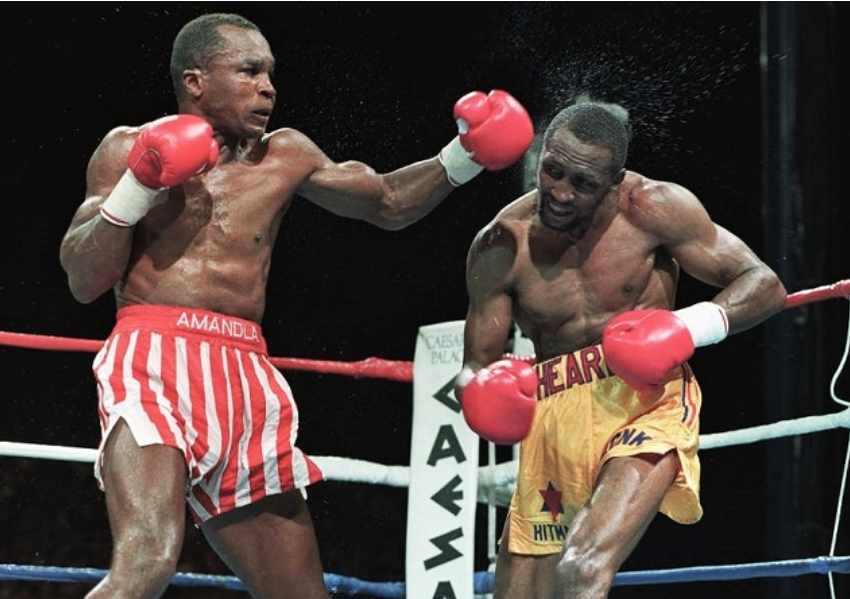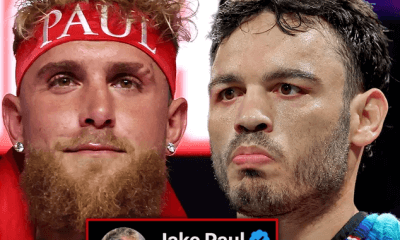Featured Articles
Boxing’s Chaotic Weight Divisions: Part Two of a Two-Part Story

In May of 1987, The Ring magazine, boxing’s premier publication, announced that it would be turning back the clock. In the future, the monthly top-10 ratings would be limited to the eight classic weight divisions. The champions of the “junior” divisions would be rolled into the next highest weight class.
“Our goal,” said The Ring editor Nigel Collins, “is to restore boxing to the way it used to be, when the champ really meant something. The thing is so watered down now that it has become a farce.”
The last straw for the self-styled Bible of boxing was the introduction of the 105-pound weight class earlier that year. The fledgling International Boxing Federation got the ball rolling and the two other relevant organizations, the WBC and WBA, were quick to embrace it. This latest addition to boxing’s taxonomy created a second weight division below the standard flyweight class. Only three measly pounds separated the 105-pound class from the class directly above it.
Making matters more confusing, the three organizations could not agree on what to call the new weight division. The IBF named it mini-flyweight, the WBC called it the strawweight, and the WBA named it the minimumweight division.
The addition of this new weight class was seen as a cash grab, a move to extract more money in sanctioning fees from the sport’s promoters. It was certainly that, but there was more to it. The honchos of the three organizations could see that the Orient was “under-served.” The best fighters in this region of the world, with few exceptions, were “mighty-mites.” When the IBF released its first mini-flyweight top-10 list, only four countries were represented: Thailand, the Philippines, Indonesia, and South Korea.
Cruisers
The cruiserweight division was born before the bottom end of the weight spectrum was cluttered with sub-flyweight divisions. The WBC led the way, setting the limit at 190 pounds.
Marvin Camel, who was born on the Flathead Indian Reservation in Montana, had the distinction of being the world’s first cruiserweight champion, but it took him two tries. In December of 1979, Camel’s 15-round fight with Mate Parlov in Yugoslavia ended in a draw. The do-over was held three months later in Las Vegas and Camel copped the vacant belt, winning a unanimous decision.
Camel became a two-time cruiserweight champion when he scored a 5th-round stoppage over Roddy McDonald on McDonald’s turf in Halifax, Nova Scotia, on Dec. 13, 1983, in the first world cruiserweight title fight sanctioned by the infant IBF.
Prior to this, in February of the previous year, the first WBA cruiserweight title fight was held in South Africa. Ossie Ocasio claimed the vacant belt with a 15-round split decision over Robbie Williams. In point of fact, Ocasio actually won the WBA’s junior heavyweight title, but the name never caught on and the WBA eventually fell in line with its rivals and accepted the handle “cruiserweight.”
Super Middles
The idea for a 168-pound weight class had been kicking around for some time before the International Boxing Federation gave it the stamp of approval, taking it out of the hands of fly-by-night organizations.
The IBF, headquartered in New Jersey, was pressured to create the new weight class by the management of Garden State native Bobby Czyz who had outgrown the middleweight division, but the popular Czyz was a spectator when the IBF held its first super middleweight title fight, a match between Murray Sutherland and Ernie Singletary at Atlantic City on March 28, 1984. Sutherland, who was born in Scotland but fought out of Bay City, Michigan, won the vacant belt with a lopsided decision in a dull 15-round fight.
South Korea’s Chong Pal-Park, who dethroned Sutherland but left the IBF, won the first WBA super middleweight title fight with a second-round stoppage of Tijuana’s Jesus Gallardo on Dec. 6, 1987. In November of the following year, the first-ever WBO and WBC super middleweight title fights were staged three days apart in Las Vegas.
On the 4th, at the Hilton, Thomas Hearns became the first WBO 168-pound title-holder when he got off the deck to win a 12-round majority decision over James Kinchen. On the 7th, at Caesars Palace, Sugar Ray Leonard got off the deck to stop Donny Lalonde in the ninth frame. Leonard won two titles that night as Lalonde entered the ring sporting the WBC light heavyweight title, but Sugar Ray never had any intention of defending this belt.
That set up a unification fight between Hearns and Leonard, a rematch of their scintillating welterweight battle, but almost eight years had passed since that famous fight and Leonard-Hearns II, contested at Caesars Palace on June 12, 1989, was a pale imitation of the original even though it was a very close fight that ended in a draw.
All four governing bodies would eventually bump the cruiserweight class up to 200 pounds. The changeover was made in rapid succession, one of the few instances in which the rival organizations operated more or less in concert.
Olympic Boxing
The lords of professional boxing were too smart to tamper with the traditional eight weight classes. The weights have remained unchanged for more than 100 years. At the amateur level, however, there have been frequent shake-ups.
As noted in PART ONE, the 1920 Summer Games were an important development in putting the seal of approval on the eight traditional classes and standardizing the weight attached to each class. This template remained in place until 1948 when there were changes across the board resulting from the decision to express the weights in kilograms rather than pounds. Every weight class was impacted to some degree. To take just one example, the lightweight division went from 135 pounds to 62 kilograms, the rough equivalent of 136.7 pounds.
Four years later, at the 1952 Olympics, two new weight classes were introduced, boosting the number of divisions from “8” to “10.” The new divisions were called light welterweight and light middleweight and the divisions adjacent to them were adjusted so that they wouldn’t rub too close against them.
Another new weight class was introduced in 1968, the light flyweight class with a ceiling of 105.8 pounds (48 kilograms) and in 1984 the number of Olympic weight classes went from “11” to “12” with a super heavyweight class for boxers weighing more than 91 kilograms (200.6 pounds).
The light middleweight division was eliminated in 2004 and the featherweight division was expunged in 2012, bringing the number of Olympic weight classes back to “10.” As was true when a new weight class was added, the elimination of a weight class brought about some adjustments. And it now became necessary to qualify the number by noting that these were men’s classes. The women had crashed the party.
At the 2012 Games, the first for female boxing, and once again in 2016, the ladies were sorted into three divisions: flyweight, lightweight, and middleweight.
At the forthcoming Tokyo Olympiad — pushed back from 2020 by the pandemic — there will be five weight classes for women. A featherweight (125) and a welterweight (152) class has been added. Concordantly, the lightweight division has been redefined, going from 132 to 138 pounds.
As has happened in the realm of sports at America’s colleges and universities, as more opportunities have been provided for women, there’s been some contraction for men. To accommodate the ladies, AIBA, the international governing body of amateur boxing, is doing away with two men’s classes. The light flyweight and bantamweight divisions are biting the dust.
—
It seems odd that as amateur boxing is returning to eight weight classes (for males), the pro game is heading in the other direction. The addition of a bridgerweight class will swell the number to 18.
And by the way, The Ring magazine now rates boxers in 12 weight categories. The well-intentioned rollback to the original eight never did take hold.
Check out more boxing news on video at the Boxing Channel
To comment on this story in the Fight Forum CLICK HERE
-

 Featured Articles4 weeks ago
Featured Articles4 weeks agoAvila Perspective, Chap. 330: Matchroom in New York plus the Latest on Canelo-Crawford
-

 Featured Articles3 weeks ago
Featured Articles3 weeks agoVito Mielnicki Jr Whitewashes Kamil Gardzielik Before the Home Folks in Newark
-

 Featured Articles16 hours ago
Featured Articles16 hours agoResults and Recaps from New York Where Taylor Edged Serrano Once Again
-

 Featured Articles4 weeks ago
Featured Articles4 weeks agoCatching Up with Clay Moyle Who Talks About His Massive Collection of Boxing Books
-

 Featured Articles5 days ago
Featured Articles5 days agoFrom a Sympathetic Figure to a Pariah: The Travails of Julio Cesar Chavez Jr
-

 Featured Articles3 weeks ago
Featured Articles3 weeks agoMore Medals for Hawaii’s Patricio Family at the USA Boxing Summer Festival
-

 Featured Articles7 days ago
Featured Articles7 days agoCatterall vs Eubank Ends Prematurely; Catterall Wins a Technical Decision
-

 Featured Articles4 weeks ago
Featured Articles4 weeks agoRichardson Hitchins Batters and Stops George Kambosos at Madison Square Garden




















